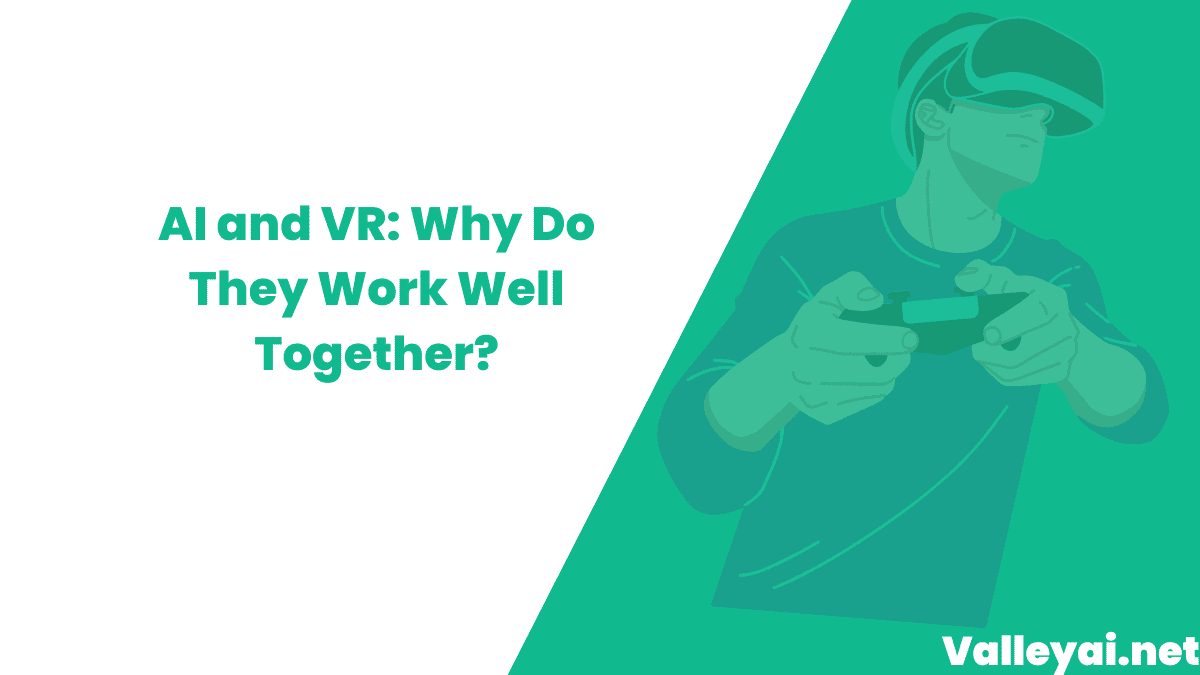Artificial intelligence (AI) and virtual reality (VR) are two of the most exciting technologies, and when combined, they can create a powerful experience that is greater than the sum of its parts. Technology is the new wave of the future. When you consider all the technological advances that are occurring at such a rapid rate, we can say that the future of technology is now here.
The global market for both artificial intelligence (AI) and virtual reality (VR) has been experiencing tremendous growth in recent years. AI technology is being applied across a range of industries, while VR is being used in fields such as gaming, education, and healthcare.
This article will explore how AI and VR work together, the benefits they offer, and the potential applications of this exciting technology.
Understanding AI and VR
Virtual Reality combines hardware and software to let humans immerse themselves in digital worlds. Artificial Intelligence supports us in making technological advancements that react intelligently to the circumstances.
By using Virtual Reality well with Artificial Intelligence, we can achieve more effective outcomes. Both technologies are developing rapidly. This means that there is enormous growth and potential for career advancement in both of these technologies.
Here are some key points why AI and VR work well together and make such a great team.
- Immersive experiences
One of the primary benefits of VR is its ability to create immersive experiences. By putting on a VR headset, users can be transported to entirely new worlds and environments. However, to create truly immersive experiences, the virtual world needs to be able to respond to the user’s actions and movements. This is where AI comes in. The virtual environment can adapt and change based on the user’s behavior by using AI algorithms, making the experience even more realistic.
- Personalization
Another benefit of combining AI and VR is the ability to personalize the experience for each user. By analyzing data on a user’s behavior and preferences, AI can create a unique experience tailored to their needs. For example, an AI-powered VR game could adjust the difficulty level based on the player’s skill level or modify the storyline based on their previous choices.
- Realistic simulations
AI can also help to create more realistic simulations within VR environments. By using machine learning algorithms, AI can analyze real-world data and create simulations that accurately represent the behavior of the real world. This can be particularly useful in industries such as healthcare, where VR simulations can be used to train medical professionals in a safe, controlled environment.
- Natural language processing
Natural language processing (NLP) is an area of AI that focuses on teaching machines to understand human language. By incorporating NLP into VR experiences, users can interact with virtual environments using natural language rather than relying on controllers or keyboards. This can make VR experiences feel more intuitive and immersive.
- Predictive analytics
Finally, AI can analyze data collected from VR experiences and make predictions about user behavior. This can be valuable for businesses looking to optimize their VR experiences for maximum engagement and revenue. By understanding how users interact with VR environments, companies can make informed decisions about improving the experience and creating more value for their customers.
Market Size of AI and VR
The virtual and augmented reality market was estimated at $28 billion in 2021 and is predicted to reach $860 billion in 2031, growing at a CAGR of 40% from 2022 to 2030.
The increase in market share is due to the growing initiatives of the government, as well as the increasing investments in the AI market. The growing usage of AI across various industries has attracted the attention of government officials, which has resulted in increased initiatives and investment.
For instance, in 2022, the National Security Commission on AI (NSCAI) announced an increase in the amount of money spent on basic research and development to ensure that the US remains AI-ready.
What the Future Holds
As tech leaders continue to pursue new avenues for VR and AI, these two fields are beginning to merge closer. You may have been aware of computer vision. It utilizes artificial intelligence to enhance how technology can discern a person’s actions and movements within space. To make our virtual worlds better-equipped, we can create a new world that can extend virtual Reality.
Additionally, the savings from automation advances in deep learning that lead to various applications across different industries, and the increasing acceptance of IoT technology in daily life fuel development in the AI market worldwide.
Explore the Deep learning vs machine learning as well.
Potential Applications of AI and VR
There are many potential applications for combining AI and VR.
One of the most exciting is in the field of education and training. By creating immersive and interactive virtual environments, AI and VR can be used to teach complex concepts in a way that is engaging and easy to understand. This can be especially beneficial for fields like medicine, where trainees need to learn complex procedures in a safe and controlled environment.
Another potential usage is in the field of entertainment. By creating highly immersive and interactive virtual environments, AI and VR can be used to create new forms of entertainment that are not possible in traditional media. For example, a game that uses AI to analyze the user’s behavior and adapt to the virtual environment in real-time can create a highly engaging and personalized experience that is not possible with traditional games.
Finally, AI and VR can also be used in the field of marketing and advertising. By creating personalized and interactive virtual environments, companies can create more engaging and effective marketing campaigns that are tailored to the individual needs and preferences of their customers.
Bottom Line
AI and VR are two technologies that complement each other in many ways. By combining the power of AI with the immersive experiences of VR, developers can create experiences that are more lifelike, personalized, and engaging. Whether it is in the field of education and training, entertainment, or marketing and advertising, AI and VR can create an experience that is more engaging and personalized. As these technologies evolve, we expect to see more innovative use cases emerge.
- Understanding the Landscape of Cloud Vulnerability Management - March 25, 2024
- Quality Assurance Strategies for Startups: Ensuring Software Reliability - March 5, 2024
- Working of NLP to Improve Copywriting in AI Paraphrasing Tool - February 28, 2024

